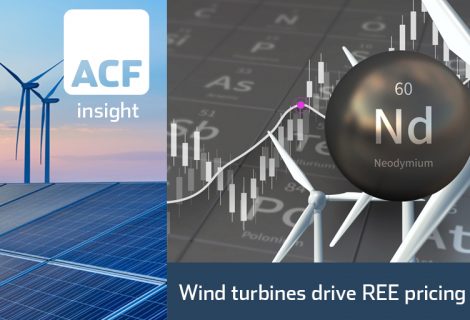Green Energy’s Hidden Impact on the Environment
Conventional energy sources such as coal, oil, natural gas, and nuclear material have a substantial effect on the environment via the release of harmful greenhouse gases (GHG). Carbon Dioxide (CO2) and Methane (CH4) account for over 90% of gases emitted into the atmosphere. GHGs also cause water pollution, wildlife and habitat loss, and require significant land and water use.
Renewable (non-conventional) energy is considered to be less harmful and energy efficient because it does not deplete the earth’s natural resources (directly). However, numerous studies have shown that renewable sources such as solar, wind, biomass, geothermal and hydropower also have environmental impacts, although at lower levels than fossil fuels. In other words, there are few entirely ‘free’ alternatives from an environmental perspective.
The environmental impact of renewables varies based on their respective transformation processes (first law of thermodynamics) for generating energy. By understanding the supply chain of each renewable source, we can determine the potential and quality of the environmental risks associated.
Solar Energy
Solar energy is considered the most important source of renewable energy because it is abundant, inexhaustible and clean (i.e. it does not emit GHG). However, there are some environmental risks during the energy transformation process.
Photovoltaic (PV) technology requires 3.5-10 acres of land and concentrating solar ‘thermal’ plant (CSP) facilities require 4-16.5 acres per megawatt of energy generated creating a potential for habitat loss. In addition, CSPs require 600-650 gallons of water inside the solar array per megawatt-of electricity capacity.
PV cells are manufactured using chemicals to purify the semiconductor materials. These chemicals – gallium arsenide (GaAs), copper indium gallium-diselenide (CIGS), and cadmium telluride (CdTe) – are known to cause environmental risks. For example, GaAs is known to cause toxicity in the lungs, kidneys and reproductive organs, CIGS may cause pulmonary toxicity and CdTe can cause lung, kidney or liver failure.
90% of solar panels are made up of glass which cannot be recycled because the panels contain plastic and lead, so as a result end up in landfills. The International Renewable Energy Agency (IRENA) estimates that there will be 78 million tonnes of PV raw materials globally by 2050 if companies do not recycle.
Wind Energy
Wind (a secondary effect of solar energy) is a clean and sustainable way to generate electricity due to its small land footprint. Modern wind turbines are relatively low maintenance and able to last several months compared to their predecessors that were relatively unreliable. Like solar, wind energy is also free, making it a cheap input resource for utility companies.
Wind energy’s carbon footprint is considered to be the lowest per unit of electric energy generated as it produces zero carbon emissions. However, wind turbines require land use and are usually built in rural areas leading to “industrialisation of the countryside” affecting wildlife and fish habitats. Spinning turbine blades pose a threat to flying wildlife such as birds and bats.
Most wind turbines contain sulfur hexafluoride (SF6) which is 23,500 times more potent than carbon dioxide as an atmospheric heating agent. However, only a small amount gets released from the turbines during operation and therefore it is not considered to have a significant impact on the environment, though some authorities are raising serious challenges about the reported accuracy and so true extent of electricity generation SF6 release to the atmosphere.
Biomass Energy
Biomass is organic material derived from plant, animal, and human waste. Energy is generated by burning or anaerobically digesting/fermenting biomass products which releases heat in similar ways that burning fossil fuels does and also raises concerns about air emissions vis flu gas waste.
The energy transformation process emits harmful greenhouse gases into the environment. Biomass burning is the second largest (after fossil fuels) source of non-methane volatile organic compounds (NMVOCs), which include ethanol and formaldehyde.
Biomass plants for transportation liquid fuels in particular lead to significant land use to generate feedstock. For example, in order to produce 3,914,000 tonnes of liquid transportation biofuel, 2,800,000 hectares of land is needed for energy crop production. In addition, due to the significant use of wood in the production of non-transportation bioenergy, there is also a risk of deforestation.
Geothermal Energy
Geothermal energy is heat derived within the sub-surface of the earth whereby water and/or steam carry the geothermal energy to the Earth’s surface. Geothermal energy can be used for heating and cooling purposes or used to generate clean electricity.
The most common type of geothermal power plant (hydrothermal plant) is located near geologic “hot spots” (hot molten rock located close to the earth’s crust that produces hot water). Other types include enhanced geothermal systems (hot dry rock geothermal) where the earth’s surface is drilled, cold water is pumped in and returns to the surface as heated water.
During the drilling phase harmful gases such as CO2, CH4, Ammonia (NH3) and Hydrogen Sulphide (H2S) can be released affecting air and water quality. In addition, terrain changes may occur expressed as seismic shocks, subsidence or even volcanic eruptions.
Hydroelectric Energy
Hydroelectric power energy is sourced from large dams and small run-of-the-river plants and delivers approximately 16% of the world’s electricity today. The largest producers are China, Brazil, Canada, and the United States.
The dams capture free flowing water into hydro plants that is replenished by rain and snow. Hydroelectric plants have the ability to generate large amounts of electricity that can easily be adjusted to meet consumer demands by controlling the flow of water to the electricity generating turbines.
Dams and hydroelectric plants block off the natural current of rivers and sediments which can impact downstream habitats. This causes a disruption to the migration routes of fish and decreases the flow of nutrients required for underwater habitats. In addition, dams can prevent fish from reaching their natural environment and spawning grounds causing a reduction in fish populations because they get trapped inside the dams.
Hydrokinetic Energy
Hydrokinetic energy is sourced from river currents or waves. River hydrokinetic energy (RHK) is a practically untapped renewable energy source. Electricity-generating turbines are placed directly in fast river flows, avoiding the need for a dam to impede water flow. The kinetic energy generated from the flow, is then converted into electricity. However energy is being removed from the ecosystem and depending on the relative scale of the turbines this could be significant.
Wave energy technology can require a significant amount of ocean space, competing with the shipping and fishing industries while potentially damaging local marine life. Emissions from wave technology are known to produce 0.05 pounds of CO2 equivalent per kilowatt-hour (KWh) compared to 1.4 to 3.6 pounds of CO2/KWh from coal generated electricity, which is 28-72x less CO2.emitted per KWh.
Renewable energy technologies have been observed to have environmental impacts albeit at lower levels compared to conventional energy sources. With sustainable investment at the forefront, investors are more environmentally conscious and incorporate ESG (Environmental, Social, and Governance) filters into investment decisions to better identify risks and opportunities.
















